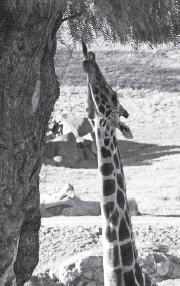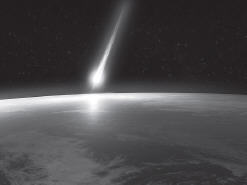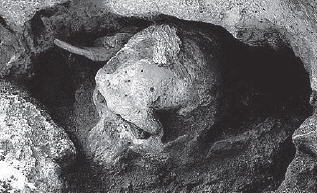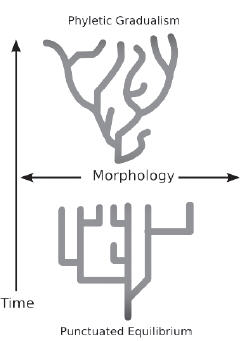
When it comes to evolution, he is everywhere. You can’t distinguish evolution from him. Charles Darwin is synonymous with his theory. His idea however has become an ideology. It has caught the fancy of people so much that they are ready to accept anything that connects to his proposition, no matter how remotely.
Charles Darwin knew about practices prevalent among farmers at the time that included selective breeding. Farmers would experiment with seeds; some of these seeds would stand the test of time while some would fail to. This is common observation. From this, Darwin conjectured that natural conditions must also be acting as a filter deciding which individuals last and which don’t. He called this filter “natural selection.” It wasn’t a breakthrough discovery, but since he proposed a single mechanism for visible diversification of all life, he swept people’s hearts. Another independent researcher, Alfred Russell Wallace also proposed a similar idea from the Malay Archipelago independently around the same time. But Wallace didn’t meet with the same applause, much less stand the test of time. He is almost unknown to the 21st century human being.
Confusion
A close look at the arguments of the evolutionists reveals that they confuse the issue of whether natural events direct consciousness or consciousness directs natural events. This confusion is evident in the arguments for natural selection. According to Charles Darwin, natural selection is the process by which nature organizes and improves life forms. Note the language Darwin himself used to explain it:
“Natural selection is daily and hourly scrutinizing throughout the world, the slightest variations, rejecting those that are bad, preserving and adding up all that are good, silently and insensibly working…”
On one hand, Darwin wrote that natural selection is “scrutinizing.” The act of scrutinizing depends upon consciousness. It implies some living force is carrying out the activity of scrutinizing. Who is the living force? Does he imply that nature itself is conscious? Else, who is the person behind nature who scrutinizes?
Changing Understanding
The understanding of evolution has undergone landmark changes over a period of time. Here we present the major changes in evolutionar thought:
a. Lamarckism

Jean-Baptiste Lamarck, the French biologist was one of the earliest to develop a theory on evolution. He proposed that each kind of organism had adapted to live in its environment. These adaptations centered around the way the organism used its body parts. Those body parts that are not used regularly to help them survive in the environment would not be needed. Larmarck explained his theory of evolution through inheritance of acquired characteristics (also called “soft inheritance”). These characteristics, as per him were passed on to the next generation.
However, the current understanding that genes are passed on from on generation to the next, discredits this theory. Today, it is accepted that genes provide the characteristic of the organism and these characteristics do not change within the life of the organism.
An experiment was done to prove this. The tails of mice were cut off and their offspring always had their tails when they reproduced. This was done over 20 generations and the same results occurred.
A typical example supplied to explain Lamarckism is to explain long necks of giraffes. Giraffes live in dry regions where leaves are high. Giraffes had to reach and stretch their necks to reach the high leaves. This constant stretching caused the necks to stretch over time. This change in the size of the neck was passed onto their offspring, which means that all future generations would also had longer necks. Thus, according to this theory, it was the environment that caused the change in the organism in its attempts to strive.
However, alternatively, one could say that giraffes with long necks are found in regions where leaves grow high on trees because of the simple fact that they can’t bend down and eat from the leaves at a low height or fresh grass that grows on the ground. Naturraly, one could say that the giraffes will populate areas where leaves grow high on trees.
b. Darwinism
Since Lamarckism was dismantled by experimental data and the Mendel’s explanation of the genes, it was time for another explanation. Along came Charles Darwin. He proposed the mechanism of “Natural Selection.” Darwin recognized that there was much variation within species. According to him, these variations or differences allowed certain organisms to be more successful in their environment than others. This he called natural selection. When the environment would change, natural selection would allow the strong to flourish. This was quite graphically called “survival of the fittest” by Herbert Spencer, one of his contemporaries. Darwin even incorporated this phrase into the fifth edition of his Origin Of Species.
Those individuals that have advantageous traits in terms of obtaining food and escaping predators than others would be more successful. Darwin explained the same phenomenon of long necks of giraffes in a different way. He reasoned that the longer necked giraffes were able to reach the high leaves and therefore had more food available than those giraffes that had short necks. This meant that the long necked giraffes had better chances of survival than the shortnecked ones. The long-necked giraffes produced more offspring and passed on the gene of long necks to their offspring. Thus, it was the environment that selected favorable variations while the organism had no role in its evolution. Mendelian genetics gave more credence to Darwin than to Lamarck.
The strong undercurrent of an understanding of ruthless competition dominating life on the earth is evident in Darwin’s explanation. Thomas Malthus, an independent thinker had compiled by 1826, An essay on the principle of population. Malthus proposed that the animals and man reproduced in geometric progression while supply of food only increases arithmetically. He argued that if even one specie of life reproduced without any check, it would soon overrun the world. To explain, he cited the example of fish and insects that lay thousands of eggs. Darwin himself admits in his writing,
In October In October 1838… I happened to read for amusement Malthus on Population… it at once struck me that under these circumstances favourable variations would tend to be preserved, and unfavourable ones to be destroyed. The result of this would be the formation of new species.”
But do we observe this in nature really? Has any specie actually overrun the planet because there was no check on its reproduction? Man hasn’t put a check on the reproduction of animals etc. Still, their population is very much in control. In fact, human interference has contributed to decreasing their population.
c. Catastrophism

Some time later, there was prevalent a theory of catastrophism. The French paleontologist Georges Cuvier influenced by the intellectual climate of the French Revolution avoided any religious or metaphysical ideas in his proposal of evenst with a global impact like floods etc. However, English geologists like William Buckland and Robert Jameson later even linked Cuvier’s work to the idea of the Biblical flood and proposed catastrophic extinction of species.
This certainly does explain the elimination of species, but fails miserably to explain the creation of new species.
d. Uniformitarianism
Then in eighteenth century, James Hutton and later in the nineteenth century, Charles Lyell dismissed the earlier understanding of extinction of species due to catastrophes and proposed the theory of Uniformitarianism which stated that evolution was in fact a gradual, slow process. According to this understanding, the same natural laws and processes that operate in the universe have always operated in the universe in the past. Not much has changed; all things continue as they were from the beginning of the world. Most geologists beginning the late nineteenth century accepted this new theory mainly because they thought the earlier theory supported God’s involvement in the events on earth while this theory easily discounted that fact.
e. Phyletic Gradualism
The next step was a theory called phyletic gradualism, basically rooted in uniformitarianism. According to this theory, species continue to adapt to new environmental and biological selection pressures, and over the course of their history, gradually become new species.
During this process, evolution occurs at a smooth, steady, and incremental rate, even on a geological timescale. New species arise by ultimate gradual splitting of older species into descendant species lineages rather than by the abrupt splitting.
f. Punctuated Equilibrium
The problem with phyletic gradualism was that the fossil records did not correspond to the the thoery.
In 1972, evolutionary biologists Niles Eldredge and Stephen J Gould pointed out that the degree of gradualism commonly attributed to Charles Darwin was virtually nonexistent in the fossil record, and that stasis(long periods of inactivity) dominates the history of most fossil species. Much of the fossil record hints at puzzling long periods of stasis, with scarcely any change. They called the theory “Punctuated Equilibrium.”
The forms of living organisms remain static during the long periods. When evolution occurs, it is localized in rare, rapid events of branching speciation (called cladogenesis). Cladogenesis is simply the process by which species split into two distinct species, rather than one species gradually transforming into another.A typical species will arise from an earlier species in a “geological microsecond” a period of a few thousand years that appears like an instant from the multimillion-year perspective of geological time. Also, a species will not arise through a gradual modification of its parent population. Rather, it will arise when a tiny group that has been isolated from the main population, perhaps by a geographical barrier.
The consequence of the theory of punctuated equilibrium is that it makes the process of large-scale evolution officially invisible. On one hand, we cannot expect the fossil record to show how a new species evolved, for the evolution takes place in a tiny population during a geological “microsecond.” On the other hand, we cannot expect to see a new species evolve within the recorded span of human history, for a geological microsecond of 10,000 to 50,000 years is still immensely long when measured in human lifetimes.
ONE THING IN COMMON: DISAGREEMENT

Thus, we see that the accepted understanding of evolution of life has undergone major and drastic changes from the original idea proposed by Charles Darwin. The various theories don’t even agrre with each other in themechanism by which evolution takes place. We will certainly not be surprised to hear of another modification that seeks to further mend the original ideas in order to comply with the available evidence. When things change so often and are so different from the original understanding, it does not contribute to the credit of empirical scientists, but rather to their discredit.
Inadequacy of intermediates
Darwinist thought proposes that all biological systems must have developed in small increments from simpler systems. Every stage in the development of, for example, a fin into a leg, must have been sufficiently beneficial in and of itself, to be selected for. If this transformation is not justified i.e. all the intermediate stages between the starting organ and the end organ (eg: for some fish species, Darwin proposed that fins evolved into wings, turning them into birds) are not an improvement over the earlier stage then the development would not proceed further. Answering some criticism regarding the development of the eye, Darwin commented,
Reason tells me, that if numerous gradations from a perfect and complex eye to one very imperfect and simple, each grade being useful to its possessor, can be shown to exist; if further, the eye does vary ever so slightly, and the variations be inherited, which is certainly the case; and if any variation or modification in the organ be ever useful to an animal under changing conditions of life, then the difficulty of believing that a perfect and complex eye could be formed by natural selection, though insuperable by our imagination, can hardly be considered real.
But, Darwinists have an interesting explanation. Richard Dawkins, the most prominent and aggressive contemporary Darwinist has the following measly and arrogant explanation to offer to us when asked about the intermediate stages in the development of a feather.
There's got to be a series of advantages all the way in the feather. If you can't think of one, then that's your problem, not natural selection's problem… It's perfectly possible [that] feathers began as fluffy extensions of reptilian scales to act as insulators… The earliest feathers might have been a different approach to hairiness among reptiles keeping warm.
Note the words “got to be.” It is imperative that the proposed idea is true. Science seeks to discover truth not press for acceptance even in the lack of evidence.
Dawkins’ explanation seems like a patchwork to plug holes in the Darwinian Theory. In absence of a coherent understanding and a logical explanation, the onus is placed on the reader to put the ends together. There are many other cases where the benefits of the intermediates can’t be understood/ explained except through rash, inconclusive and arrogant remarks on the critic’s questioning ability.
Human Skull rewrites understanding
In September 2009, palaeontologists in Georgia, Europe have unearthed remains of five primitive humans that date back to 1.8 million years ago, suggesting some of our oldest ancestors lived in the region at the time. The remains are the earliest human remains to be discovered outside Africa. The team headed by Darwinist professor David Lordpanidze from the Georgia National Museum has been doing research at the site at Dmanisi in Georgia since some years.
The partial skeletons, which represent the earliest humans discovered outside Africa, challenge the currently accepted theory to the core, that our ancestors evolved entirely on the African continent and left it only 60,000 years ago. According to Chris Stringer, head of human origins at the Natural History Museum in London, “they raise important questions about where that species originated.” But where are the answers? For reasons unknown, Darwinists are not ready to reveal their secrets to us.

For years, Darwinists claimed that ancestors of the modern human being migrated out of Africa only about one million years ago. Before, they inhabited only Africa where they had originated in the first place. It was originally thought that there were two great movements, the first, of Homo erectus, some one million years ago, and the second, of our own species, Homo sapiens, about 100,000 years ago. The new fossil evidence contradicts this theory completely.
To reconcile, it is now being proposed that this human being left Africa and travelled to Eurasia, which it did not take to for some reason, and returned to Africa instead. Why? It is not revealed. Maybe, because this story is the best reconciliation between the contemporary understanding and the the newly discovered fossil. Any other reconciliation threatens to shake the very foundation.
Thus, presently the “out of Africa” hypothesis has mutated into the “out of Africa and again back to Africa” hypothesis.
CONCLUSION: THEORY AND EVIDENCE
Usually a scientist formulates a hypothesis and then submits evidence to support it. Anyone who wishes to propound or explain the theory further has to submit evidence. The onus is on the scientist to present data or evidence to conform to his theory; the onus is never on the questioner. This is objective science.
In the absence of real evidence, the propagator “scientists” are trying their bit, quite unsuccesfully though, to come up with something to match the initial proposition. But the evidence doesn’t match. As newer evidence comes up, the theory is twisted a little bit so that the evidence doesn’t outstretch beyond the limits of the theory. Sometimes, the onus to comprehend the compliance of non-compliant theory and evidence if placed on the questioner by arrogant scientists. Recent discoveries threaten the very understanding of human history.
All this can be called science by the respective follwoers. The question is do we also call it science?
Nanda Dulala Dasa has a bachelor’s degree in Mechanical Engineering. He is a part of the editorial team of Indian English BTG. He stays at ISKCON Mumbai where he teaches Krsna consciousness to college students.
